The Back Four: ¡Dale!
Miami, Charlotte, and more USL Championship and USL League One standouts from Week 14
Welcome in to The Back Four!
Before we start, check out Backheeled for Kyle Adams praise, Monterey’s viking resurgence, and more. You can also find This League! on the site for an audiovisual dive into the week that was.
Without further ado, let’s get to it.
Miami and the art of simplicity
Sometimes, soccer is a deceptively simple game. The more you shoot, the more likely you are to score. The less shots you allow, the less likely you are to give up a goal. By those metrics, Miami FC has been nothing short of sensational since the start of May.
In terms of shot creation, only Charleston, Orange County, and El Paso have outdone Gaston Maddoni’s side. The shot denial numbers aren’t quite as exceptional, but Miami still ranks as a top-ten team in that category from May on. It’s a remarkable situation for a club that many people saw as an also-ran early in 2025.
Maddoni has galvanized the success by sticking to clear principles. Miami isn’t going to wow you with major phase-to-phase shape changes or reinvent the wheel with slick passing plays. Instead, they’re committed to a defensive 4-4-2 and hammering a suite of offensive patterns tailored to their most talented players.
Defensively, organization is the name of the game. This club ranks 21st in the USL in terms of midfield takeaways and 11th in defensive-zone takeaways; they aren’t going to lunge in for an ill-advised challenge. That sensibility can introduce danger – Miami is allowing 33 box touches per game, by far the worst in the league – but means that said danger is easier to mitigate.
Take the two examples of Miami’s defensive shape above. In the first, the Floridians are pressing in their 4-4-2, and they’re accomplishing a few things. As the ball moves toward their right side, Miami hedges winger Cristian Vazquez toward the receiver and supports him with rotations all across the pitch.
Deeper, the ball-side center mid hedges over to cut off an easy centering pass. Right back Jonathan Ricketts steps up as well, trusting himself in a one-on-one against star winger Danny Trejo. Up top, Miami’s forwards split high and low; Francisco Bonfiglio is ready to cut out a lane toward a Legion center back, while Sebastian Blanco shadows a defensive mid.
The result? Birmingham has no good options. Though Miami would go on to lose this game by bunkering during the second half, their early press was eminently organized because of moments like this.
It isn’t always perfect, and Miami can’t always stay on the front foot, but that’s where the growth has come across 2025. I mentioned those box penetration numbers above, and it’s notable that Miami has held their last two opponents far below that average. FC Naples took just 16 touches in the area in Jagermeister Cup play, while Rhode Island FC only got to 25 last weekend.
That second frame above illustrates Miami’s improvement closer to goal. Even though Rhode Island is between lines and has an edge to dribble into zone 14, they won’t have it easy because of a whole-midfield reaction on Miami’s part. Lucas Melano has tucked in like a No. 8, while both Diego Mercado and Matias Romero (closer to the ball) try and clog the central areas.
Because of that reaction, RIFC has to find a needle in a defensive haystack. This play ultimately ends with central defender Bolu Akinyode clearing the danger – evidential of how Miami is happy to funnel opponents into isolated situations against their defenders.
Is the approach overly cautious? Maybe, but the back line is up to the task. Akinyode and Daltyn Knutson, the first-choice center back pair, are winning a cumulative 73% of their duels on 4.5 takeaways per game. Ricketts is winning 75% of his tackle attempts. Maddoni’s system is extremely good at putting those players in advantageous situations, even if they’re close to goal.
On the flip side, Miami’s attack is downright swashbuckling at its best. This team ranks fifth in the USL in terms of long passes (16.4% of their attempts are classified as “long”) yet ranks ninth in terms of launches, per Opta. In other words, Miami wants to play with a sense of verticality but isn’t punting it upfield without purpose.
Players like Ricketts – vastly underrated as a two-way weapon in this league – and Akinyode are allowed to pass it around at the back and draw the opposing press forward. The back four took more than 190 touches against Rhode Island, for instance. Once space opens up because of that patient circulation, it’s off to the races.
Above, you’re seeing Ricketts and Vazquez link on the far side. The winger makes a daring dart over the top, the right back’s chip into him is flawless, and suddenly Miami is in business. Meanwhile, Melano is hewing toward the far post, where he’ll get a look at goal off the ensuing cross.
Melano is constantly making those left-wing-to-far-post runs, and it’s why he’s putting up 1.9 shots on 3.4 box touches per game despite taking touches at a 12th percentile rate. It’s a nice encapsulation of a Miami team that ranks 22nd in the USL in possession but is eminently opportunistic whenever they get a foot in the door.
Can it be sustainable? That’s the big question. If the data is any indication, Miami’s positive xG margin over the last two months says that the answer might be “yes.” That’s a huge credit to Maddoni and the way in which he’s maximizing this roster.
New Mexico, adding layers
New Mexico sits at the extremity of style in the USL. This team is historically dominant in terms of their share of possession (62% on average!) yet somewhat pedestrian in terms of their offensive output. At the time of writing, New Mexico is tied for fourth place in the Western Conference for goals scored.
The gap can be explained by the way in which United exerts their control. That extreme level of possession can slow the game down, allowing defenses to settle in. Whether that’s an actual problem or not is in the eye of the beholder; New Mexico takes an average of 27 final-third entries between each shot they attempt in the box, second-worst in the USL, but…I mean…they’re still in first place.
It’s useful to start with the club’s framework in build. New Mexico often uses their No. 9 as an additional midfielder that can take touches in front of the opposing back line to advance play. That flexibility is a useful tool, but it can also leave United undermanned closer to goal.
Consider the two setups from a recent rout against Oakland. You’ll note how the midfield, marked in yellow, sets up with Gedion Zelalem low and two No. 8s further ahead. Meanwhile, striker Thomas Amang drops in to essentially create a diamond.
Each instance features New Mexico exerting control up the middle, but there’s a knock-on effect of the central superiority: Mukwelle Akale has room to run in behind as the Roots’ defense is forced to commit at the halfway line.
In the first case, Ousman Jabang’s positioning as the right-sided No. 8 is causing the most trouble. No defender is particularly close to Jabang, but Oakland’s wingback has to hedge his bets in case Jabang gets the ball. As such, Akale has a momentum edge on the right side and can potentially streak behind said wingback.
In the second case, Oakland does better and takes on a narrower shape. However, that tight alignment frees New Mexico right back Jaylin Lindsey to receive in space toward the sideline. This time, Lindsey is the player that’ll freeze the wingback rather than Jabang; you can already see Akale making a diagonal run beyond the defender.
When New Mexico can engage their midfield in these areas and force opponents to overextend around halfway, they’re in business. That didn’t happen as often a week later against Phoenix, where a tight man-marking scheme forced build to hew towards the wide areas. United still scored three goals, but it took more effort to get to the final third. Once there, the tendency to drop the No. 9 low made it hard to break down Rising’s block.
Hence, Sanchez mixed things up against Colorado Springs on Saturday. Rather than use a traditional No. 9, New Mexico deployed winger McKinze Gaines up top and let Marlon Vargas run underneath him in a second striker role. That change didn’t necessarily revolutionize United’s patterns in build, but it did provide far more upside in transitional moments.
That’s seen above, where New Mexico is able to create a turnover in their own zone via Vargas and get into the opposing box in a matter of seconds. It’s sharp, it’s quick, and it furnishes Gaines with a great opportunity mere feet away from goal. Even though they only managed a draw against the Switchbacks, New Mexico put up their second-most attacking-zone takeaways (including one that created a quick chance for Vargas) and third-most fastbreak shots in any match in 2025.
By its very nature, the Sanchez system can sometimes stall out in the final third; we saw as much in the box entry stats. If New Mexico can add consistent transition chance-creation into their arsenal, it’s going to be the final piece in a puzzle that’s already very, very close to completion.
Charlotte’s rapid re-tool
Less than a month ago, Luis Alvarez and Alfredo Midence both contributed to goals as Charlotte picked up a resounding win against One Knox. Fast forward, and they’re both playing in the USL Championship.
For most clubs, losing two talismanic creators would be an unmitigated disaster, but the Independence haven’t rested on their laurels. Instead, decorated League One veterans Pedro Fonseca and Tresor Mbuyu were both signed last Friday to make up the difference.
Charlotte is a better team with Fonseca and Mbuyu around, and we’ll get to their roles in a minute. In the meantime, it’s useful to consider how the Independence are built to succeed without high-volume creators in their system. We shouldn’t forget that Alvarez was meant to head to Spain last winter, after all. Charlotte has been planning for this eventuality; malleability is their strength.
In their most recent Jagermeister Cup game, Charlotte used a Christian Chaney brace to get to penalties and beat higher-division Lexington. As in their matches against North Carolina in prior cup fixtures, the Independence adopted more of a back-five look, but it was their use of long passes and decision-making in second-ball situations that stood out.
Above, you’re seeing a prime example. Charlotte swings the ball from one side to the other at the back, switching the point in the process. When they hit the right side, the Independence have successfully pinned a Lexington defender between Rafael Jauregui (who defended like a wingback in this match) and a streaking Souaibou Marou. That’s where the long ball comes in, serving to activate the tandem of Marou and Chaney.
Notably, there isn’t a ton of support coming from players like Omar Ciss and Bachir Ndiaye out of the midfield. That same fact held true on Chaney’s first goal and most other long ball (and, pursuantly knockdown) situations.
What you are seeing is a commitment to structure. Ciss and Ndiaye create a firm line of confrontation in the midfield that’ll stop the opposition from breaking. The goal isn’t to dominate territory or counterpress with particular aggression. Against Championship teams, Charlotte wants to pick their spots to break and otherwise stay steady.
Compare that sensibility to this weekend’s win over Tormenta. Charlotte only needed to put in two-thirds as many defensive actions in their own zone because of what you’re seeing above: a far bolder use of the midfield.
Here, Ciss has made a daring run up the left side, and while it obviously didn’t create a goal, it allowed the center mid to set himself up in the counterpress. Meanwhile, Ndiaye roves a few yards outside of the 18-yard box, ready to close toward any possible exit pass. Ndiaye’s responsibility sets the table for the three-man trap further ahead, composed of Ciss, advanced fullback Anthony Sorenson, and a forward.
This play results in an Independence recovery on the edge of the final third and will ultimately lead to a go-ahead penalty kick. It’s an order of a magnitude more muscular than what we saw against Lexington, and therein lies the beauty of Charlotte’s setup.
Mike Jeffries is extremely good about reading the situation, switching from 4-2-3-1 to 5-3-2 and manipulating the height of his midfield line in order to meet Charlotte’s opponents where they are. This is why the Independence are a perennial playoff team, agnostic of brilliant players like Alvarez.
Now, it isn’t all roses. Charlotte has put up 1.8 goals and 12.4 shots per game when Alvarez has appeared over the last two years. Those numbers are down to 1.0 goals and 7.7 shots per 90 without him. Likewise, passes into the final third have cratered by 39% in matches without Alvarez. The framework is strong, but this club needs a ceiling-raiser.
That’s where the new faces come in. Mbuyu, a player deeply familiar with the Independence system, is an effective threat over the top that can force defenses to bend. In 2023, he scored nine times on 7.8 xG, ranking 11th in the league in fastbreak shots and first in fastbreak chances created.
Fonseca is a fundamentally different player than Alvarez and tends to do his damage closer to goal, but he’s still a major addition. Alvarez brings “big play” ability from deeper spots; he led League One in through balls over the last two years. Still, Fonseca completed a greater share of his passes into the final third (28%) than Alvarez in 2024 while putting up the division’s eighth-most xG in the run of play. The Brazilian brings dribbling and pressing closer to goal that are hard to match at this level.
Things might look a little different in Charlotte in the months ahead, but don’t expect a drop-off. The Independence have a grit that goes beyond one single player, and they’ve armed themselves to keep succeeding.
Tormenta in tumult?
After losing to Charlotte on Saturday, South Georgia Tormenta is now riding a one-win-in-seven streak. It’s a study in contrasts in more than a few ways. The Independence, ever pragmatic, are making moves, including signing a player in Pedro Fonseca that was arguably Tormenta’s best piece in 2024. Fonseca’s old club, meanwhile, can’t find a new way forward and might be stuck in a stylistic rut.
This is a particularly frustrating team because of their obvious potential. Watch Ian Cameron’s side execute their offensive patterns, and you can’t help but come away impressed. That said, Tormenta has sorely lacked a final ball in 2025. They haven’t been able to create golden chances in transition, either. In the moments where their attack has faltered, South Georgia has proven susceptible against the counter. There’s an uncanny element of bad luck at play in Statesboro.
Despite the fact that they’re USL League One’s second-most effective team at accessing the final third, Tormenta struggles to create good opportunities. Opta’s “big chance” stat is something of a black box, but it shows South Georgia to be one of the division’s least effective teams at creating great opportunities. Tormenta also ranks ninth in xG per shot.
A Jagermeister Cup loss to Tampa Bay two weeks ago was the story of 2025 in a nutshell. Tormenta took an early lead against the Championship side by maximizing the dual strikers in their 4-4-2, using slick passing in the final third to generate a goal-creating cross. Still, they couldn’t hold that lead, with miscommunication between the central midfield and central defense conspiring to gift the Rowdies a win.
Those central relationships, for better or worse, have been an inflection point.
When Tormenta is at their best, the midfield pivot provides safety and sets the table for expressiveness in the attacking lines. Though South Georgia fell to Charlotte over the weekend and spent half the match playing with 10 men, the pivot came good. Gabriel Cabral, ever the model of consistency, went 54-for-59 as a passer and completed 16 attempts into the final third.
Above, Tormenta’s use of Callum Stretch as a deeper-seated right back opens up Cabral between the lines. As he receives, Cabral first-times a pass into Mason Tunbridge. The Englishman started this game as the No. 10 but regularly made hard cuts toward the right side to find space. This time around, Jonathan Nyandjo – the starting right winger – makes a supremely clever run underneath Tunbridge, filling the channel and allowing Tormenta to enter the final third.
Everything up to this point is just as Cameron would’ve mapped it out. However, the final ball into Sebastian Vivas doesn’t connect, and it’s back to square one.
Those sorts of plays, defined by sharp third-man movement out of the midfield and confident possession, are Tormenta’s bread and butter. It’s very pretty to watch, but the lack of a final ball around the 18-yard box has been killer. What’s more, occasional structural issues introduced by all the fluidity have proven problematic.
Consider the example above. To start, Nyandjo is possessing on the left side and attempting to play in midfielder Conor Doyle as he makes a forward run. It’s a mirror image to the clip from above, but with Nyandjo effectively serving as the Tunbridge-esque table-setter.
Because it’s a member of the pivot making that bold charge forward, there’s trouble on the horizon after a turnover. When Nyandjo’s pass is intercepted, Tormenta is suddenly lacking one of their stoppers up the middle. Cabral lunges toward the ball, misses in his challenge, and thus sets Tampa Bay up to break with four players in an Olympic swimming pool’s worth of space.
If you’re Ian Cameron, this is the sort of situation that makes you sweat. Tormenta wants to play on the front foot and prioritize offensive soccer, but they can’t do so at the expense of their defensive structure. Until luck breaks their way in the final third, it’s unclear whether South Georgia can stick to their classic style while actually winning soccer games.
Quick Hits
In other news this week…
Go check out my Backheeled feature on Loudoun’s improvement in 2025, featuring interviews with Ryan Martin and Tommy McCabe.
The brothers Davila went 81-for-96 as passers against Tampa Bay this weekend, creating four chances and making 11 recoveries all the while. I’m increasingly convinced that the sibling combo is LouCity’s best choice in the pivot; they’ve got an innate sense of balance that no other twosome brings to the table.
Changing formations is never easy, but Greenville looked like a natural fit in a true 3-4-3 this weekend. Covering space in the midfield in that formation can be difficult, but the energy of Ivan Agyaakwah (13 duel attempts) was paramount to the effort. The former Furman man breathed down the neck of Chris Heckenberg in the holding spot within Naples’ 4-1-4-1, and the Triumph effectively used steps up from the back to plug holes in the halfspaces behind him. Greenville only got a draw, but they held Naples to just 0.7 xG.
I do think it’s worth considering the exceptional instances where Matt Poland’s side created chances. Karsen Henderlong got shots in the 12th and 13th minutes – the latter of which he converted – when Naples was able to work into one-on-ones against Tyler Polak on the left and then serve in.
You’re seeing the run-up to one of those plays above, with right-sided defender Zane Bubb having stepped to the ball without forcing a takeaway. With Bubb high, center backs Toby Sims and Brandon Fricke have to hedge central, and that rotation puts Polak in a pickle. This is small stuff, but it matters. Greenville almost got it entirely right on Saturday; you’ve gotta be feeling good if you’re Rick Wright.
I’m high on Westchester despite the foibles, but I’m worried about their inability to climb the ladder up the midfield. Against One Knox, the pivot pairing of Joel Johnson and Conor McGlynn only completed one pass into Daniel Bouman in the attacking half. Skip passes – think defender to Bouman, skipping over the pivot – were far more fruitful, but it’s still something to note.
The dynamic is fascinatingly bifurcated. McGlynn found fellow forward Juan Carlos Obregon on seven different occasions, after all. Obregon’s hold-up play is a wonderful makeweight, but a piece is missing up the middle nonetheless.
The USL subreddit is bad.
I’m a simple man, and if I can watch a straight-to-streaming Predator movie where a Predator fights samurai, I’m going to be happy. I’ve been deep down a rabbit hole of Sengoku and Edo era history as of late, so the fact that it’s seeping into my sci-fi consumption is icing on the cake.

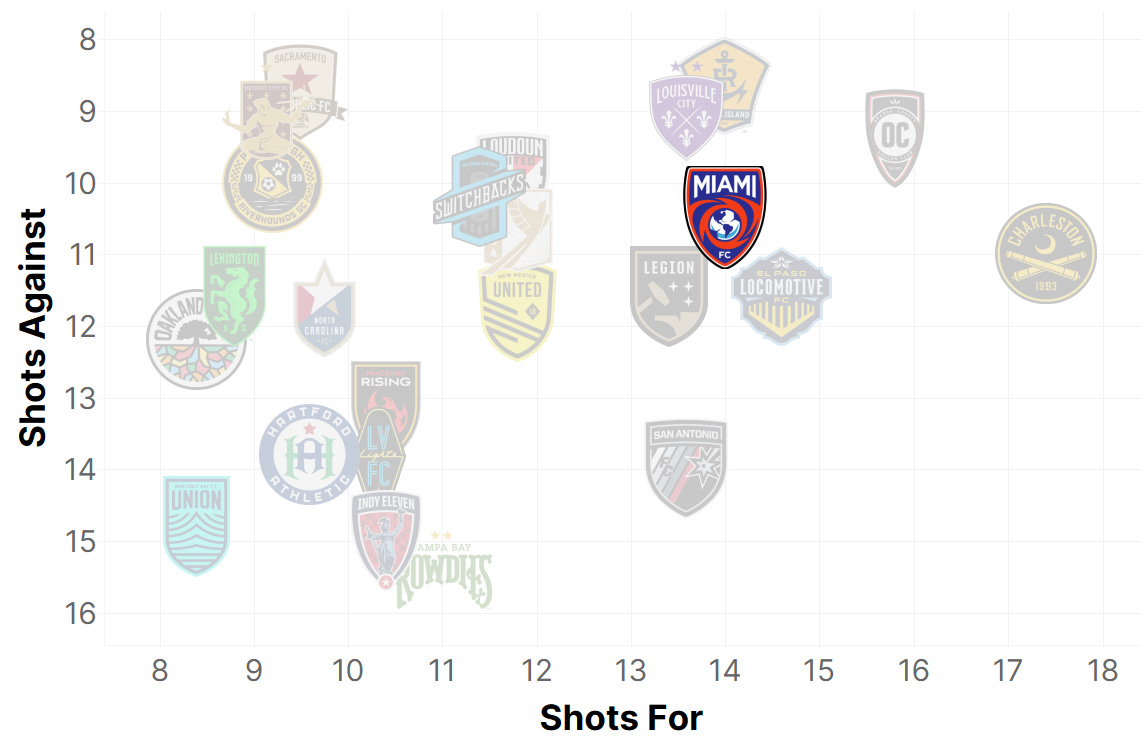
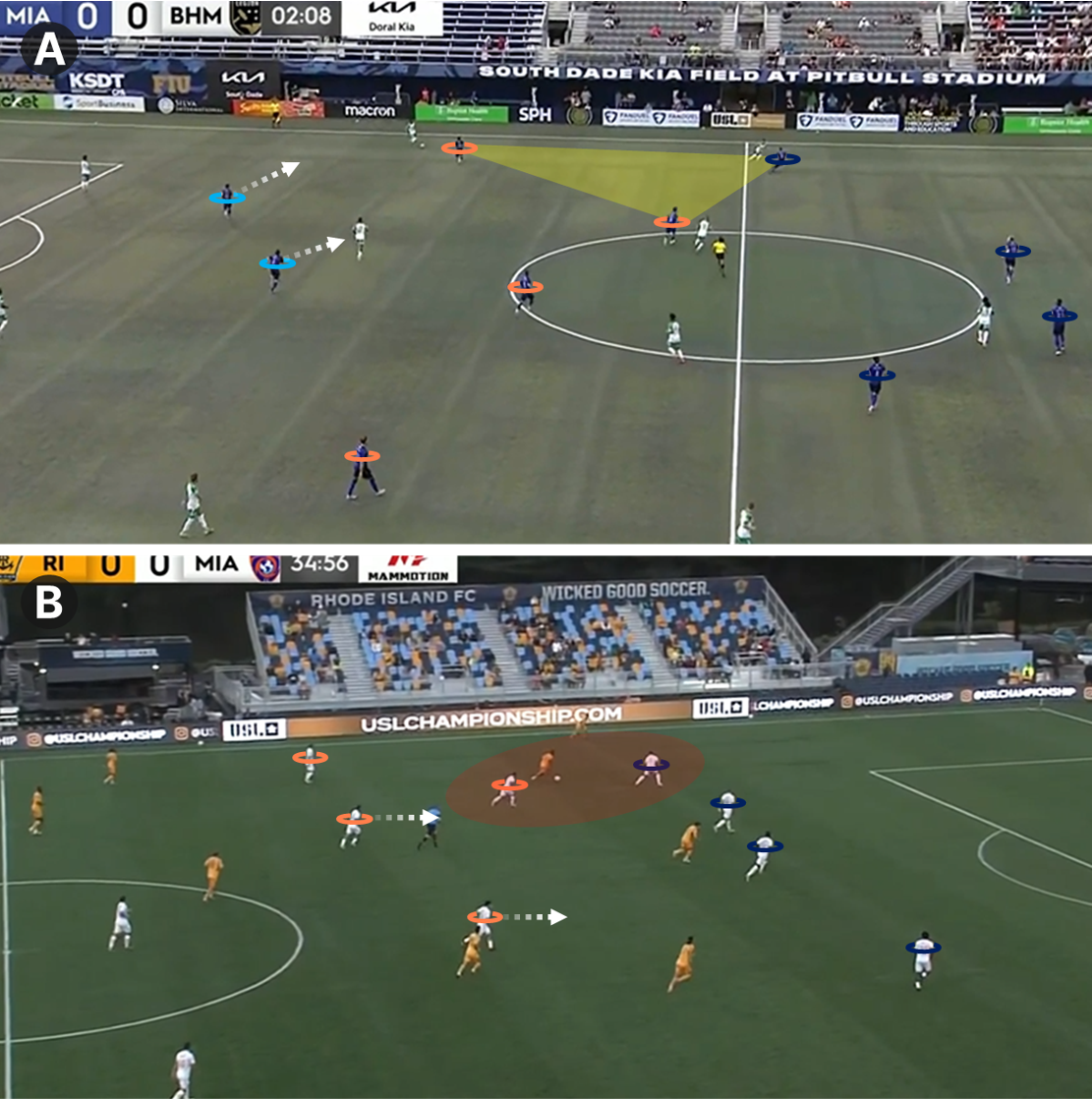
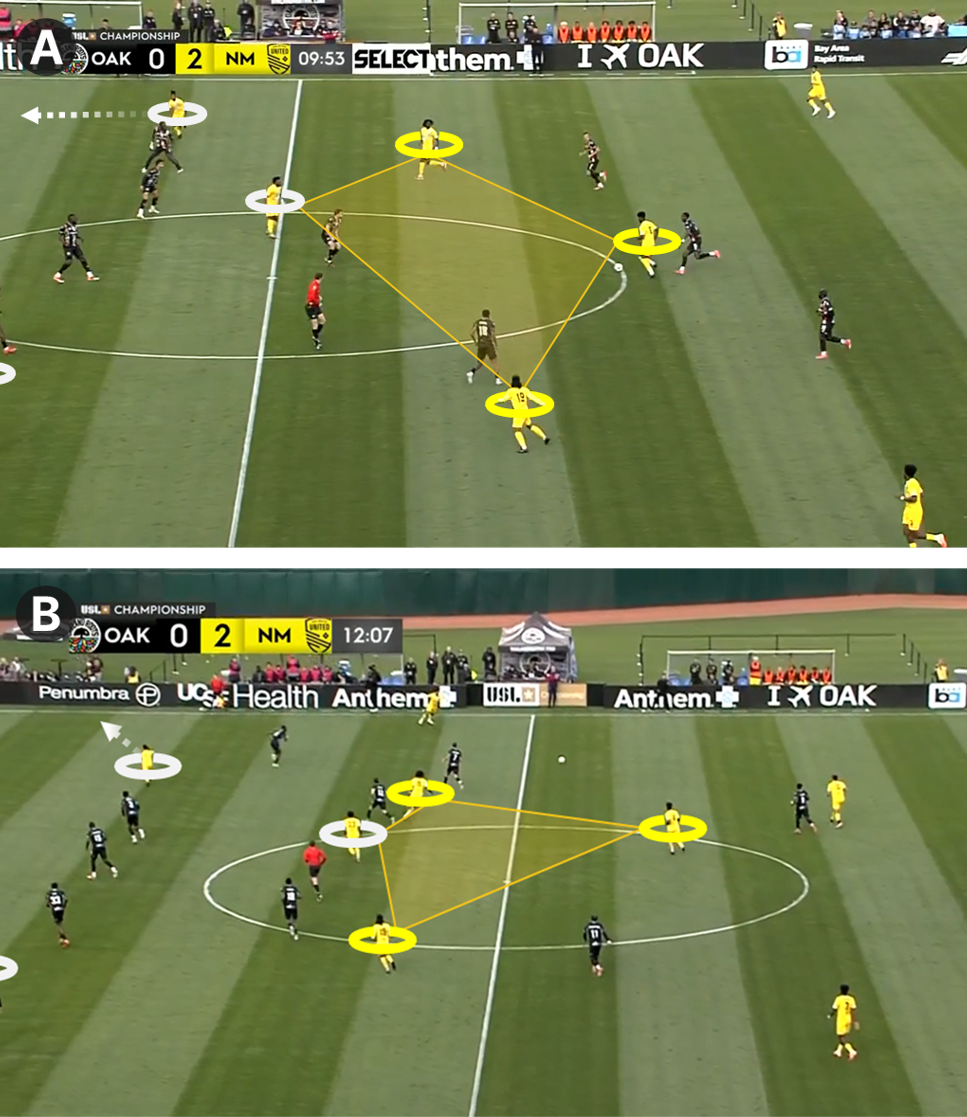
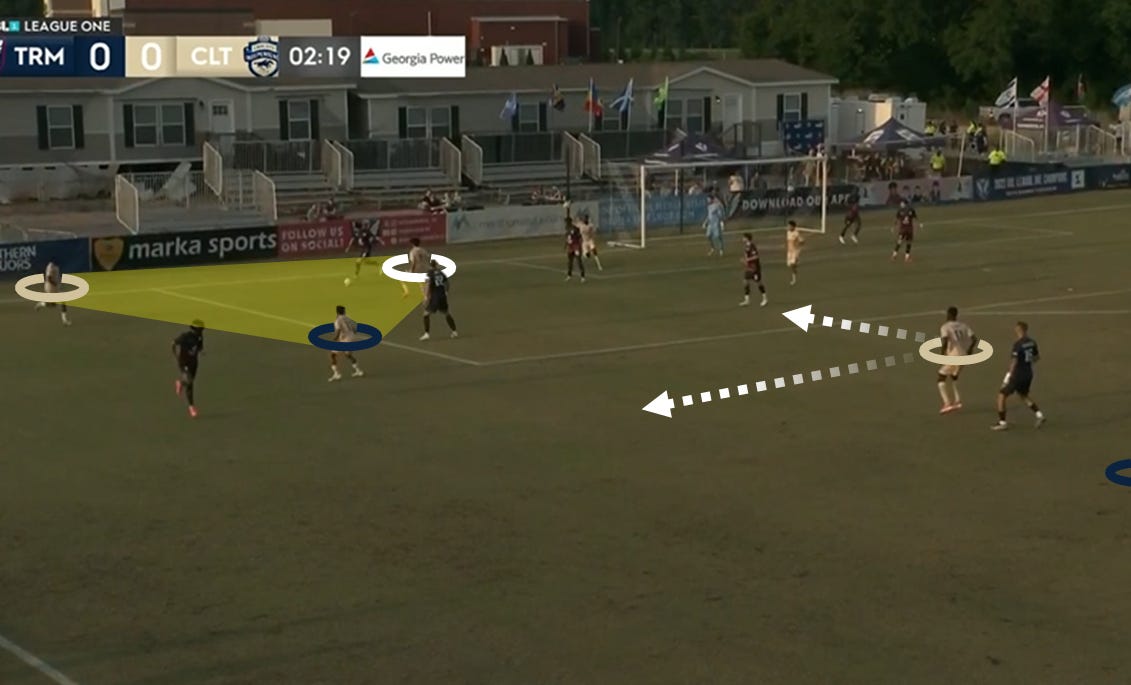
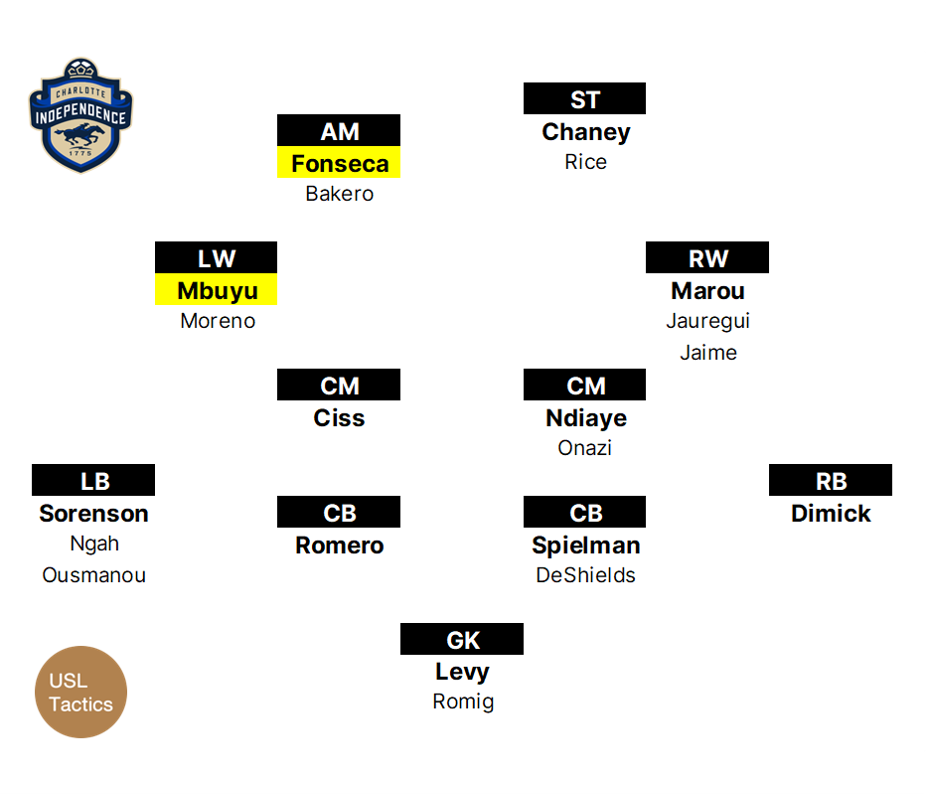
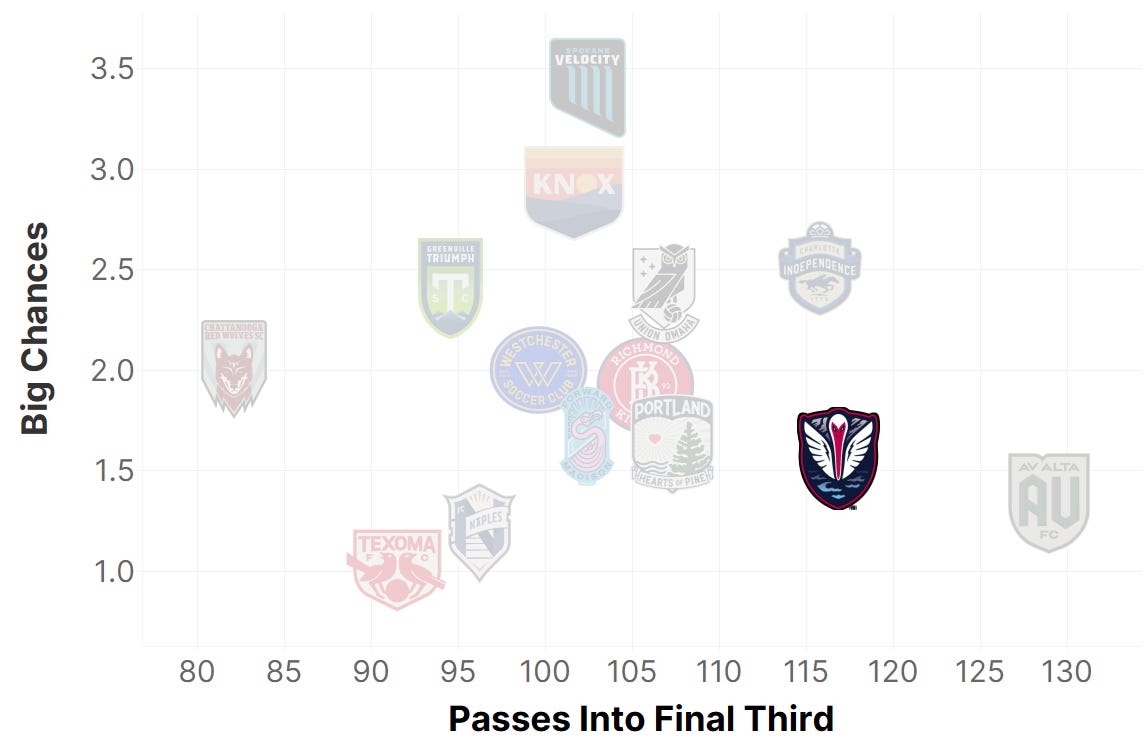
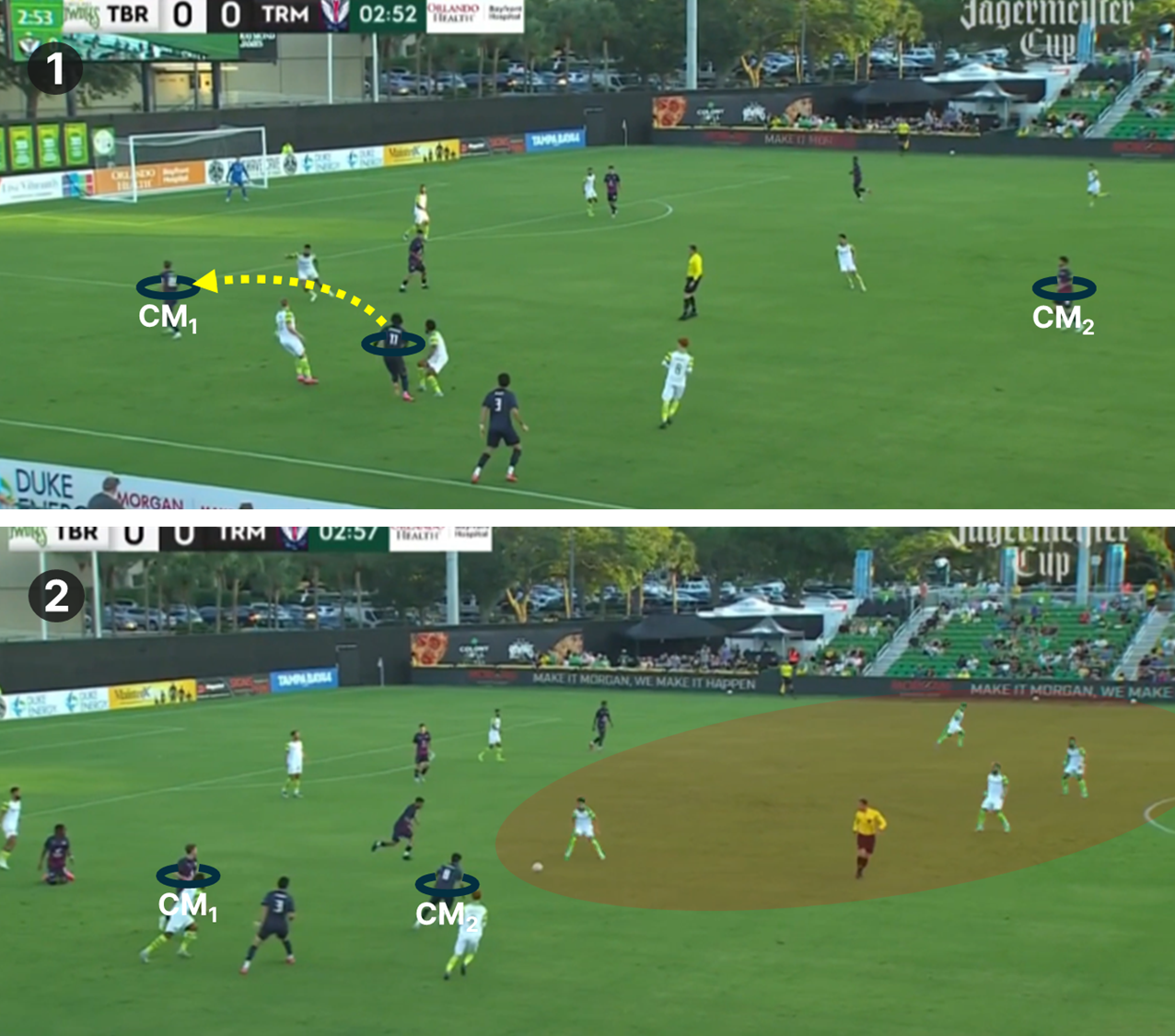

Always enjoy learning about the rest of the leagues beyond just what I get through AV Alta fandom out here, thanks for putting these together! Us being over in the corner of the big chances created / passes into the final 3rd chart was a little disappointing but not hugely surprising – though hopefully Mariona’s emergence helps us improve a little.